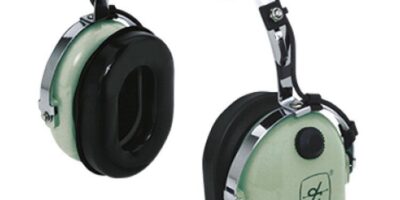What to Expect on the AFOQT Exam
What to Expect on the AFOQT Exam
The Air Force Officer Qualifying Test (AFOQT) is a critical step for anyone aiming to become an officer in the United States Air Force. Understanding what to expect can help you prepare effectively and boost your performance on the exam day.
Overview of the AFOQT
The AFOQT is composed of 12 subtests. These are Verbal Analogies, Arithmetic Reasoning, Word Knowledge, Math Knowledge, Instrument Comprehension, Block Counting, Table Reading, Aviation Information, General Science, Rotated Blocks, Hidden Figures, and Self-Description Inventory. Each subtest is timed, with some lasting as short as 6 minutes and others going up to 22 minutes.
Verbal Analogies
This subtest measures your ability to determine relationships between different concepts or words. You’ll be presented with word pairs and asked to identify how they are related or choose a word that completes a pair. Focus on understanding patterns, synonyms, antonyms, and classification categories.
Arithmetic Reasoning
In this section, you’ll solve basic arithmetic problems often framed in word problems. Practice with percentages, ratios, averages, and solving for variables. The questions require applying mathematical reasoning to practical situations.
Word Knowledge
Here, you’ll be tested on your vocabulary. You need to know definitions and proper usage of various words. Reading regularly helps build a stronger vocabulary, as does using flashcards for unfamiliar terms.
Math Knowledge
This subtest involves more direct mathematical problems compared to Arithmetic Reasoning. You will tackle algebraic equations, geometry, and basic trigonometry. Familiarity with high school-level math is important.
Instrument Comprehension
You will interpret aircraft instruments in this section. Each question features a graphic of an aircraft cockpit display and asks you to determine the aircraft’s altitude, direction, or speed. Knowledge of basic aviation terms and instruments is crucial.
Block Counting
In the Block Counting subtest, you’ll count the number of blocks in a given 3D figure. This section tests your spatial abilities and attention to detail. Practice visualizing and mentally manipulating objects to improve your performance.
Table Reading
This subtest requires you to read and interpret tables filled with data. You’ll identify values based on row and column intersections and may need to perform some basic operations to find the correct answer. Speed and precision are key here.
Aviation Information
Questions in this section gauge your knowledge of aviation principles, terminology, regulations, and procedures. You may be asked about the functions of different aircraft parts, navigation methods, or the basics of flight. Study guides specific to aviation can be highly beneficial.
General Science
You’ll encounter questions spanning various scientific disciplines – biology, chemistry, physics, and earth science. General knowledge from high school science classes is tested, along with some basic principles and facts. Brush up on fundamental concepts and terminology.
Rotated Blocks
This subtest is another measure of spatial abilities. You will see a number of 2D representations of rotated 3D blocks and must determine which blocks match the original based on their rotations. Practice visualizing rotations in your mind to prepare.
Hidden Figures
In this test, you’ll identify simple shapes hidden within complex drawings. It measures your ability to find specific visual patterns quickly. This requires good eye speed and focus, which can be improved with targeted practice exercises.
Self-Description Inventory
This personality inventory helps assess your traits, attitudes, and temperament. Your answers provide a profile of your personal characteristics to see how well they match with the demands of Air Force leadership roles. Complete it honestly and consistently.
Scoring the AFOQT
AFOQT scores are grouped into composite scores: Pilot, Combat Systems Officer (CSO), Air Battle Manager (ABM), Academic Aptitude, Verbal, and Quantitative. Each composite score is derived from a combination of specific subtest scores. For instance, the Pilot composite heavily weights subtests like Instrument Comprehension and Aviation Information. Understanding the emphasis of each composite score helps target your preparation more effectively.
Preparation Strategy
- Study Regularly: Consistent study schedules are more effective than cramming. Allocate time for each subtest based on your strengths and weaknesses.
- Practice Tests: Take full-length practice exams to familiarize yourself with the format and timing. Consistently time yourself to build speed and accuracy under test conditions.
- Focus on Weak Areas: Identify your weaker subtests and put extra effort into improving them. Online resources and study guides can be very helpful for this.
- Use Flashcards: Flashcards are useful for subtests like Word Knowledge and Aviation Information for memorizing terms and definitions.
- Brush Up on Basics: Ensure a solid foundation in high school-level math and science. Review textbooks or use online tutorials for any areas that need reinforcement.
- Understand Test Logic: Practice understanding the logic behind questions. This is especially important for subtests like Verbal Analogies and Arithmetic Reasoning.
- Take Care of Yourself: Good nutrition, sleep, and exercise can improve cognitive function and stress management. Be at your best both mentally and physically on exam day.
By understanding what each section entails and using an effective preparation strategy, you can approach the AFOQT with confidence. Success on this exam opens the door to a promising career as an officer in the United States Air Force.
